This article was originally published in the latest issue of TORTURE : Asian and Global Perspectives ( Volume 03 Number 1 & 2 | February- April 2014 )
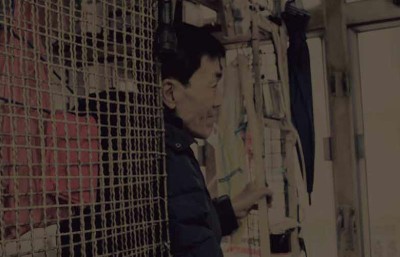
Everyone needs a life of respect. Those in cages still wait for theirs.
Written and photographs by Hazel Le & Nilantha Ilangamuwa
It was almost sunset in Asia’s global city, but darkness is a rare experience in a city that stays awake for 24 hours a day, 365 days a year. The city itself might tell many stories, if one cares to listen, as it is a bridge between the past and the present.
But, the purpose of our walk through one of most secure cities, which has contributed so much to modern world history, is to detail a sadistic story some humans face today.
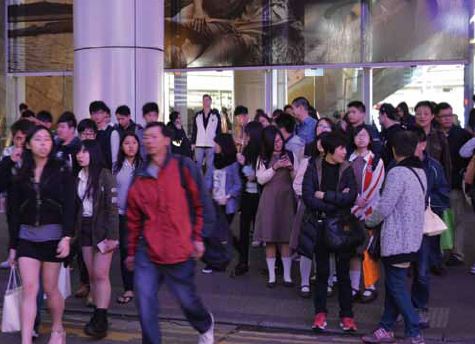 Hong Kong agencies, including immigration, ostensibly work to provide a comfortable life to those who visit and live in the territory. Hong Kong’s residents are calm and respectful. They are reserved and appear to tend towards individualist thinking, but they also know how to rise up collectively when their way of life is threatened or when the rights they consider inviolable are under attack. ( Photo:- Busy City : Mong Kok )
Hong Kong agencies, including immigration, ostensibly work to provide a comfortable life to those who visit and live in the territory. Hong Kong’s residents are calm and respectful. They are reserved and appear to tend towards individualist thinking, but they also know how to rise up collectively when their way of life is threatened or when the rights they consider inviolable are under attack. ( Photo:- Busy City : Mong Kok )
But, in a place that values freedom and respect, the legacy of “caged homes” creates a stark and chilling contrast.
What is a “Caged Home”?
Here is how the Society for Community Organisation (SCO), a prominent rights group working with the homeless, outlines the history of cage houses in Hong Kong:
“Caged homes are a miniature of Hong Kong poverty. They arose in 1950s due to an influx of refugees from mainland China who provided Hong Kong industries with cheap labour. Their arrival created a strong demand for low cost bed space apartments as the Hong Kong Government had no housing and labour protection policy for these low paid workers. Before 1985, singletons were not even allowed to apply for public rental housing.
Many single men arrived in Hong Kong with hardly any possessions. They worked as coolies and rented 3 ft. x 6 ft. bedspaces. They needed to share one kitchen and one toilet with tens of households, decade after decade. To make more profit, the apartment operators used iron cages to construct bunk beds (two to three beds stacked on top of each other), and so the name “caged home” was coined.
In 1994, the government proceeded with the enactment of the Bedspace Apartments Ordinance to regulate caged homes, but it only concerned the fire safety and sanitation issues, not the household and living spaces themselves. The ordinance, which came into effect in 1998, defines caged homes as “bedspace apartments” with 12 or above households in any flat.
At its peak, there were over 500 to 600 caged homes in Hong Kong. Today, there are still nearly 100 of them. However, there are thousands of cubicles houses which are similar to caged homes where about 12 households share a flat. According to the Hong Kong Census and Statistic Department, there are about 100,000 people living in inadequate housing, such as caged homes and cubicle houses.”
To put things more simply: a cage home is a cage no bigger than a dog pen with one small entrance through which a person may crawl through to get in and that even more difficult to get out. A cage that these people call home.
“Do these places still exist,” is the question that passed through our mind? The fact that Hong Kong, as one of richest territories in the world, might still have these cages for human beings was troubling. And we were surprised to learn that, even this year (2014) hundreds of thousands of people in Hong Kong are still homeless and many use cages as their house.
Universal Suffrage, Not Suffering
“Freedom is the most valuable principle in the territory,” Emily Lau, who is the chairwoman of the Democratic Party in Hong Kong and one of key political characters at the Legislative Council (Legco), said when we interviewed her at her Hong Kong office.
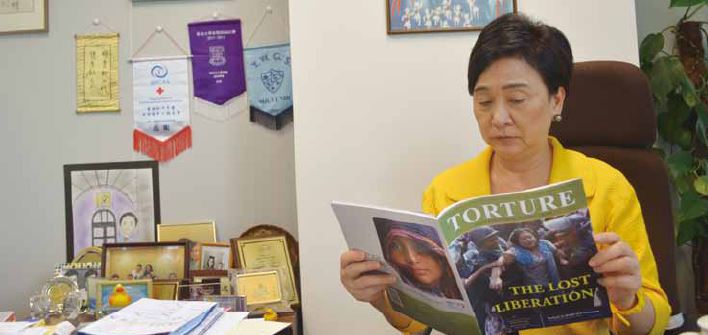
Ms. Emily Lau, Chairwomen of the Democratic Party, Hong Kong
Though she is not comfortable with the politics of Mainland China and their interference in Hong Kong, she pragmatically prefers the maintenance of political cohabitation, while also accepting that the denial of reality is impossible when one needs concrete solutions to problems.
A former journalist turned politician, Emily Lau has confidence and energy that sustains her fight for universal suffrage. “Hong Kong has unique identity of maintaining democratic values with its true meaning, therefore we need to protect them for our next generation”, said Emily.
“Hong Kong people have been fighting for universal suffrage for several decades and are losing patience. Many do not believe Beijing will allow the special administrative region to have democracy as long as China is governed by a one-party dictatorship. Although the Basic Law states that the chief executive shall be selected by consultation or election, Beijing has insisted political development should be by gradual and orderly progress,” Emily stated in a recent newspaper column.
“In 2010, the Democratic Party supported political reforms for 2012, which added 10 members to the Legislative Council and 400 members to the Election Committee that selects the chief executive. This was not universal suffrage but because of this step forward, Beijing gave Hong Kong people the understanding that the chief executive will be elected by universal suffrage in 2017, and after that, all Legco members will also be so elected,” she added.
“Not only Hong Kong, but also other countries in Asia must maintain democratic values. We must help to improve the governance system”, she said while recalling her experiences in Burma/Myanmar and as an election observer in Bangladesh.
Into the Dark Side of the Territory
Time matters in Hong Kong; time seems to fly here. The entire territory looks to see high-rise buildings at mountain level that appear calm and peaceful. But the inner story is completely different for some living in certain locales.
Despite of all its positive developments in the last few decades, many of the city’s residents face tremendous difficulties in their lives.
“Crowded with skyscrapers, Hong Kong witnesses a GDP growth of over 2 trillion HKD every year, but some of its citizens end up homeless. What they call “home” is a dim street corner, a ragged chipboard or a second–hand mattress”, Ho Hei Wah, Director of SCO noted in the preface to the book, “Homeless”, which contains a series of vivid photographs.
With this in mind, we intended to seek and learn more about the people stuck in painful and stressful conditions, waiting for concrete solutions from the government.
Such stories are hardly covered in the mainstream media. And, it is not such an easy task to get access to the areas and information that illustrate this difficulty without special assistance.
We were lucky, therefore, to receive help from Sze Lai Shan, an activist who commenced her work with those living in cages in the early 1990s. She agreed to help us visit areas of the city where people have cages for homes so we could talk with the inhabitants.
Life in the Cage
As soon as we met Sze Lai Shan at the exit of the Mong Kok Mass Transit Railway (MTR) station, we commenced a free-wheeling coversation with her. She shared interesting but painful experiences as we made our way to our destination.
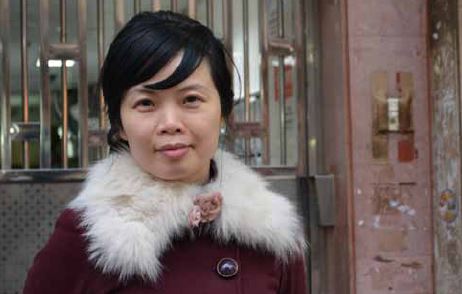 How many people are affected?
How many people are affected?
According to the government, there are 175,000 people who continue to live on the basis of temporary arrangements or in cages. But, according to independent statistics, our guide offered, there are around 200,000 people across the territory who are homeless. (Ms. Sze Lai Shan)
She informed us that while most of them have likely come from mainland China, others have been around their entire life.
The first thing we noticed, as we stepped into Mong Kok, one of the overcrowded sections of the territory, was the smell.
We were finally close to learning about the people who have spent decades with their only home a cage.
We recalled the story of Yau, who was in the cage for decades and we were curious to know about his present situation. The SCO website had this to say:
“Yau was orphaned at fourteen when his parents starved to death during World War II. He is alone in life and one of Hong Kong’s hundred thousand elderly poor. He previously worked in a bookshop and now his only hobby is reading Chinese literature. His only dream is to have an individual public housing unit and a room full of books”
He collected as many books as he could and kept a small space in his cage for them. Later, the SCO helped him to keep his books in a secure place.
However, “he passed away two years ago,” Ms. Sze updated us, dashing our hopes of speaking with him; every homeless person has a story to tell and Yau’s had been an extraordinary one.
Armed with a basic outline of the cage houses and homeless people in Hong Kong in our heads, we entered the second floor of one of the high-rise buildings in Mong Kok.
Sze Lai Shan, who is also associated with SCO, brought us along as her friends; otherwise neither security personnel nor those who are in the cage will allow us to enter or will speak to us. Literally, cage life is a secret; only landlords/cage owners, certain agents of the government, a few activists, and those who live in the cages are privy to life inside.
An Informative and Rare Meeting
“Here we are, please close the door and come in,” our activist guide passed the message to us and we entered accordingly.
Small passages took us through the apartment, letting us see the death of freedom, caged disorder, dirt, filth and the putrid smells that accompanied them.
The strangeness amplified by the fact that just outside the walls was the same city renowned for its freedom and human dignity – a contrast that conjured comparisons of heaven and hell and left us wondering if the walls themselves were another type of cage – a cage to keep misery out of sight and forgotten even with help so close by.
But we refocused on our task and approached the residents.
Despite the difficult and stressful lives they live, the residents of the caged tenement had friendly smiles to share with us. It showed a hope for change.
We sat in front of the cage of a man who has lived in here for around 20 years and who agreed to be interviewed.
Chun Yuk Chap, who is 60 years old, came from mainland China in the early 70’s and engaged in several professions here in Hong Kong. But in 1987, he rented this cage after he decided to leave Mainland China forever.
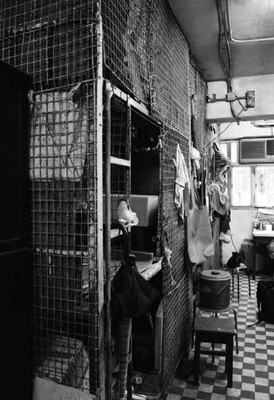 “My marriage was an arrangement. We might not have had a legal certificate, but we were living together for a period of time and we had a son too. But then our family was challenged with poverty and other social problems. That was when I decided to migrate to Hong Kong,”
“My marriage was an arrangement. We might not have had a legal certificate, but we were living together for a period of time and we had a son too. But then our family was challenged with poverty and other social problems. That was when I decided to migrate to Hong Kong,”
He explained further: “I won’t hide the reasons why I came here: China is bad in the truest sense. Freedom was only a day dream”.
However, he was able to find a cage house in 1987 when he started working as a construction worker in different places in the territory. But with the passage of time his health worsened. Now he suffers from numerous ailments.
“I’m getting tired even after speaking a couple of words, my liver is getting worse. True, the government is helping me by providing health facilities. But the situation in the cage aggravates my illnesses”, he said.
At the moment, due to his age and poor health, he is able to obtain an allowance from the Government of around HKD $ 3,000 per month, from which he has to pay HKD $ 1,400 of monthly rent for his iron cage.
Notably, he did not apply for public housing at first and he explained the reason for that:
“Many people were here at that time, we shared our lives together, and everyone has bad and sad stories to share; some as bad a story as mine. So I decided not to leave them for a public house. How can I live alone at a public house with no one?” he asked.
But later he decided to apply for public housing and leave the cage if the government would arrange a public house: “I applied for a public house a couple of years ago, and I am still waiting”. The way in which he waits is also telling of the type of life he has lived:
“I spend my time here and I have many friends with whom I spend my time. But from time to time, and one by one, they passed away, illustrating the reality of life. I know one day I have to go, and now we are only seven people here in different cages but earlier there were around 80-70 people in this whole floor. Most of them died. Now my health is getting weaker, especially due to the hygiene situation here. It worsens daily. During the summer, many fleas appear, which is the most terrible part. The owner of these cages is not concerned about these issues and we have no money to change the environment”.
When asked about the meaning of life, his response was uplifting:
“I never really thought about [the meaning of life]. I do understand everyone has meaning in their life. Even people like me who have been, and still live, through tremendous struggles to find happiness and freedom. But I believe difficulties don’t matter till you see the difference. Perhaps it’s not only seeing but also to having a desire to achieve a difference in life”.
He concluded with a philosophical take on how one can deal with the challenges of life and death:
“When you have difficult situations, the difficulties matter at the beginning. Then you get used to it. Most of incidents that I come across exemplify this known reality. However life is uncertain, no one knows the moment that we are going to have our last breath”.
“It was very difficult for us to move to another cage, leaving Mr. Chun behind, but we still had work to do. We moved to the next cage where Tang Man Wai, who is 64 years old, has spent over 30 years in the same cage. He was born and grew up in Hong Kong, and was only able to study up to primary school level due to family problems.”
He remembered how and why he came here and what the cages were like before:
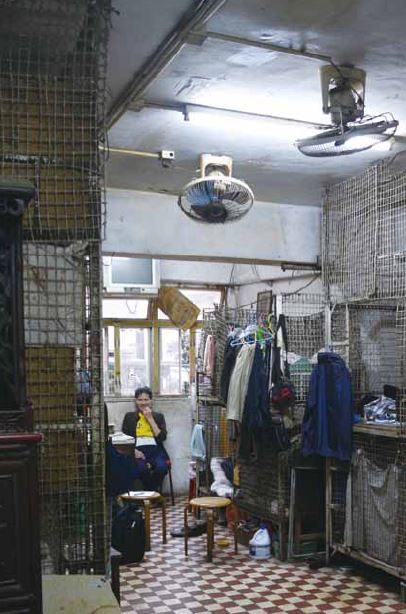 “I was engaged in many professions, one time I worked as a cook and another time as a labourer, But the monthly income was not enough to have an apartment, and I could have this cage; it was the best solution at that time. That’s how I came here in 1983,” “There were three blocks in this floor when I was first came, 70-80 people were here and they managed their life in each cage. At some time children and women were also here. But now few of us remain. Some of them passed away but a few were able to get public houses.”
“I was engaged in many professions, one time I worked as a cook and another time as a labourer, But the monthly income was not enough to have an apartment, and I could have this cage; it was the best solution at that time. That’s how I came here in 1983,” “There were three blocks in this floor when I was first came, 70-80 people were here and they managed their life in each cage. At some time children and women were also here. But now few of us remain. Some of them passed away but a few were able to get public houses.”
His story also is another horrific narration of life and struggle. He too dreams of having a public house. However, at the moment he is able to get HKD $ 4,000 allowance from the government in which he has to pay HKD $ 1,400 as the monthly rent for the cage.
These are only two stories of thousands of elderly people in Hong Kong. But there are also many women living in such cages without help who support and care for their families. “Many children who are living with their mothers are attending school, but their lives are as bad as you saw here,” Sze Lai Shan explains.
Time to Begin Healing
Living in cages is a great difficulty some residents of the city face; they need more attention from the government and they need help moving from these cages to more suitable homes.
On the surface, Hong Kong is one of most respectful places in the world, no matter who you are. The territory has attracted many people from around the globe and its efficient public services are a large part of what makes Hong Kong so appealing; it is one of the Hong Kong government’s finest achievements.
However, there must be urgent and immediate action regarding these inhuman conditions that tarnish the territory’s reputation.
Globally, Hong Kong has passed through many difficult situations, from slavery to the modern day struggle for freedom and justice. The cage culture was an available solution at one time, when the region was surviving conflict and post-conflict situations. Hundreds of thousands of people landed here seeking a better life. Hong Kong treated them with equality and did its best to overcome difficulties faced.
The world has changed and it is time for Hong Kong to live up to its reputation.
Everyone needs a respectable life, and those living in cages should not have to wait for it any longer.
 Nilantha Ilangamuwa is Editor of Torture: Asian and Global Perspectives. He also edits the Sri Lanka Guardian, an online daily newspaper. He is the author of the recently released non-fiction books, “Nagna Balaya” (The Naked Power), published in Sinhalese, and “The Conflation”, published in English.
Nilantha Ilangamuwa is Editor of Torture: Asian and Global Perspectives. He also edits the Sri Lanka Guardian, an online daily newspaper. He is the author of the recently released non-fiction books, “Nagna Balaya” (The Naked Power), published in Sinhalese, and “The Conflation”, published in English.
 Hazel Le graduated from the Hong Kong Polytechnic University in Marketing and Public Relations. She is currently part of the administration at the Asian Human Rights Commission. An article about Hazel’s childhood in Hong Kong was published in an earlier issue.
Hazel Le graduated from the Hong Kong Polytechnic University in Marketing and Public Relations. She is currently part of the administration at the Asian Human Rights Commission. An article about Hazel’s childhood in Hong Kong was published in an earlier issue.
Torture: Asian and Global Perspectives is a bi-monthly magazine which focuses on torture and its related issues globally. Writers interested in having their research on this subject published, may submit their articles to torturemag@ahrc.asia